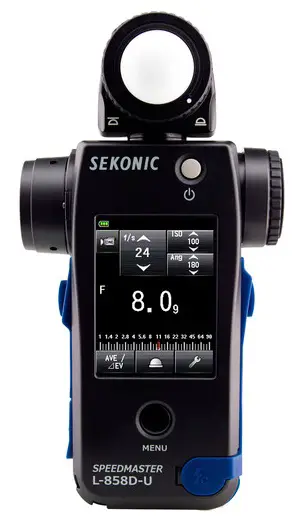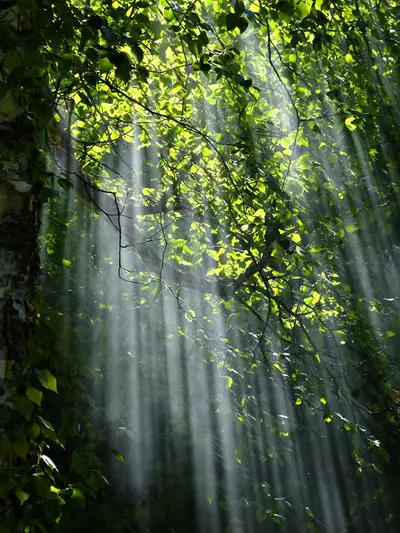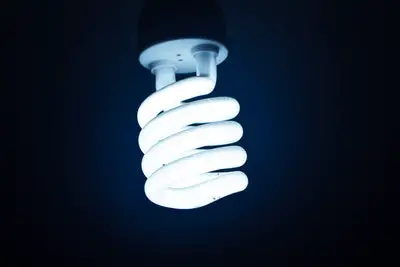A good ballpark estimate is around 100 watts of lighting per square meter (around 110watts of lighting per square yard of the right spectrum). Some plants can survive on as low as 75 ft/candles.
With lighting there are two considerations: aesthetics, and photosynthesis. You want your want your wall to look great, and an important part of that is getting the right amount of light to your plants so they can thrive.
The first step is checking out what you have at your disposal. How much light and where.
Survey your site
Surveying your site is important. There are probably multiple locations you could picture a living wall. Lighting will likely vary between them.
Outdoors you want to consider the direction the wall faces, the path of the sun throughout the year, and select plants to match.
Indoors, look to windows and skylights for natural light. Extra lighting is often a great way to give the plants a boost and make them pop visually.
Leverage natural light
When initially placing your living wall, depending on the site you can leverage natural lighting. Windows and skylights can provide all the light your plant needs if you have enough of them and select the right plants.
Outdoor walls can get away solely with natural sunlight, with extra lighting added for after-hours aesthetics.
Measuring light intensity
 Light is measured in lumens per square metre (lux) or foot-candles.
Light is measured in lumens per square metre (lux) or foot-candles.
A photometer is the tool for measuring light. There are dedicated units that go for around $25-$50 on Amazon. For commercial projects your installer will probably have one, if you’re working on a project at home, you can probably get away with a phone app.
There are apps available that use your smart phone’s built in camera and light meter. I’m not sure on the accuracy of these, but I would imagine they’re good enough. With light we’re really talking orders of magnitude. The difference between 50 and 100 lux isn’t going to matter. The difference between 100 and 1000 probably will.
What’s the easy answer?
For indoor walls put plants that prefer brighter light on the side of the wall nearest windows. Then light the wall evenly with artificial light. Ceiling mount lighting is the easiest type in a lot of installations. Select low to medium light plants, direct artificial light is a lot dimmer than even shaded or reflected sunlight outdoors.
Outdoors walls will get plenty of sunlight. Consider the path of the sun throughout the year, and select plants that will look attractive through the seasons. Lighting outdoors will be for aesthetics. Up-lighting is most common, with lights installed near the base of the wall, shining upwards. It creates a dramatic effect and extends the hours that people can notice and appreciate the wall. It can really make a building or business pop and draw interest. Especially when it’s dark out.
How do I attractively light my living wall?
Changing the lighting on your wall can have a dramatic impact, whether it’s indoors or out. Here are some ways you can think about lighting for your wall.
Down-lighting means the plants are lit from above. The light is affixed to the wall or ceiling above the plants, and casts light downwards. The closer the lights are to the wall, the more dramatic the shadows can be.
Lighting can cast patterns. If the light is more focused, and your lights are spread out, you can have alternating light and dark sections of wall, which can create contrast that’s interesting to the eye.
Up-lighting is another technique for adding visual interest to your wall. This is more common outdoors, in landscape lighting. But it can be applied indoors as well. The lights are generally near the base of the wall, so they’re not blocked by any passing people. Just like down-lighting, this created a dramatic effect, especially when the surrounding lighting is dim.
Spot lighting is a great way to draw the eye and create visual interest. If your wall has accent plants with distinct color or texture, you can bring them forward even further by spot lighting them. Spot lights are installed on the ceiling, and aimed at certain portions of the wall. They’re a more focused light source. Spot lighting can also give certain plants more light than others.
How to determine tropical plants’ light requirements
Plants evolved to thrive in different lighting levels. Some like direct light, high up in the canopy, or in open areas. Some plants do well in the understory, on tree trunks, and as smaller trees that don’t reach the canopy. And some grow on the forest floor.
The important thing is understanding your plant mix, and giving them what they need. In nature they’re probably used to a lot more light than they will get indoors. But plants are adaptable over time.
Consider their natural habitat
 The important thing to consider is that low or medium light in a rain forest will seem like very bright light indoors! Outdoors can be around 100000 lux in direct light, and 20,000 lux if you’re in the shade, but the bright blue sky is reflecting a lot of light. Near a bright window or under concentrated task lighting you might get 1000 lux, typical indoor lighting is around 100-300 lux.
The important thing to consider is that low or medium light in a rain forest will seem like very bright light indoors! Outdoors can be around 100000 lux in direct light, and 20,000 lux if you’re in the shade, but the bright blue sky is reflecting a lot of light. Near a bright window or under concentrated task lighting you might get 1000 lux, typical indoor lighting is around 100-300 lux.
The canopy intercepts between 50 to 95% of the sun’s rays, depending how dense the forest is.. Bright light tropicals will struggle indoors without bright lighting. Fortunately.
Many medium and low-light plants come from the understory. The understory gets Higher humidity encourages epiphytes to thrive. Epiphytes.
Low light plants can be from the sub-story of forest floor. Most ferns.
Watch how they adapt
When you move a plant it will go through an adjustment period. It can be hard to unravel whether a plant is yellowing because it’s stressed from a change in environment, or because it’s not getting enough sunlight, or other factors. But, it’s a hint.
Plants will reduce their chlorophyll level if they’re getting too much sun. You may have noticed that leaves that are usually in the shade are darker green than leaves in the sun. This is because the plant is trying to make the best use of
Sources
https://www.thoughtco.com/lighting-levels-by-room-1206643
https://en.wikipedia.org/wiki/Daylight
https://furbishco.com/biowall-vegetated-wall/lighting/

I’m Alex Lafreniere. I learned a lot about plants when I built and operated a landscaping company. But, there’s always more to learn. Ever since travelling across the world, I’ve wanted to find ways to bring more tropical and exotic plants into my life. This is the site where I share everything I’ve learned with you.
This site is owned and operated by Plant Hardware, a sole proprietor headquartered in Calgary, Canada. Plant Hardware is a participant in the Amazon Services LLC Associates Program, an affiliate advertising program designed to provide a means for sites to earn advertising fees by advertising and linking to Amazon.com.Plant Hardware may also participate in affiliate programs with Bluehost, Clickbank, CJ, ShareASale, and other sites. Plant Hardware is compensated for referring traffic and business to these companies.

